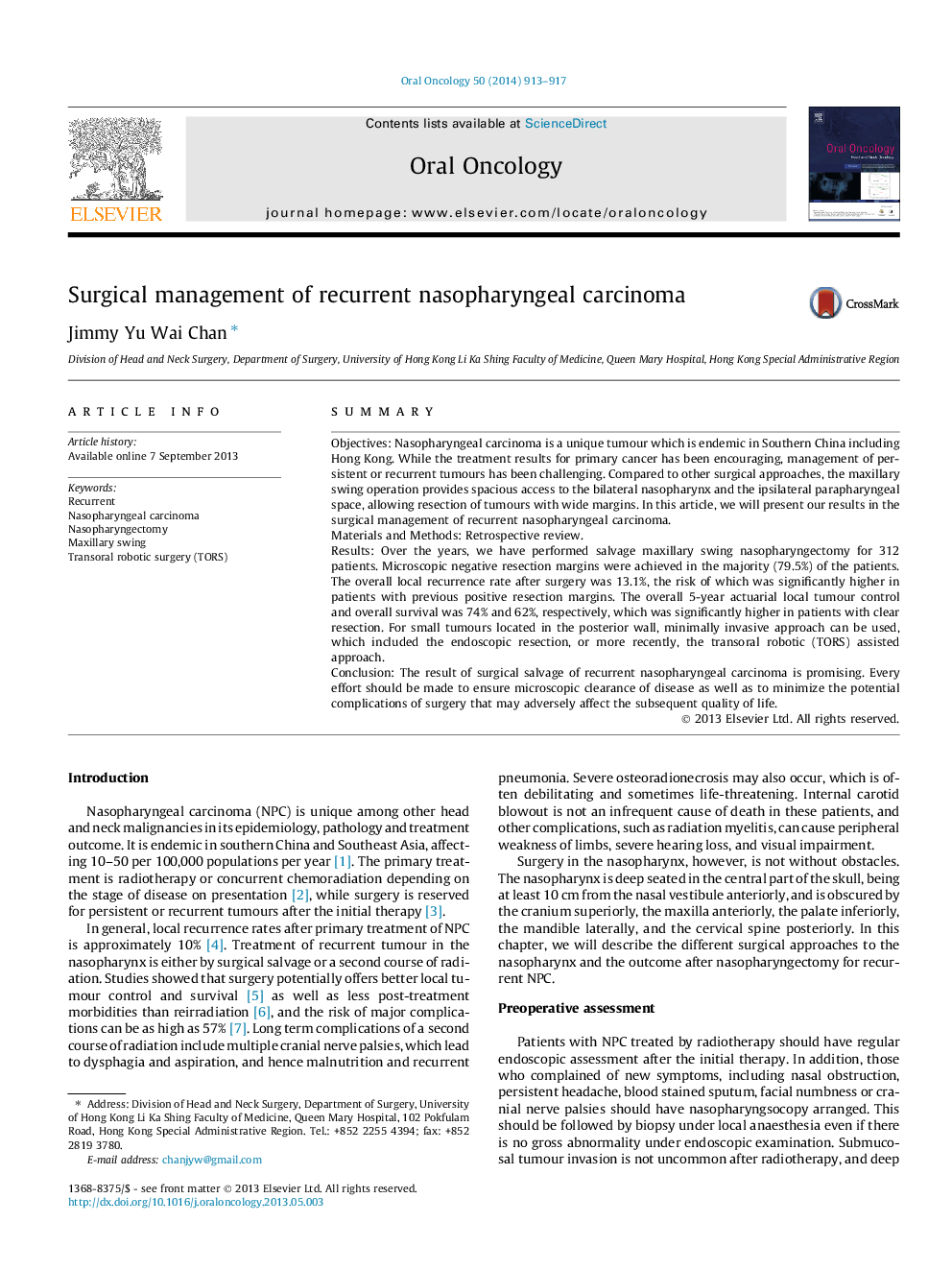| Article ID | Journal | Published Year | Pages | File Type |
|---|---|---|---|---|
| 3164044 | Oral Oncology | 2014 | 5 Pages |
SummaryObjectives:Nasopharyngeal carcinoma is a unique tumour which is endemic in Southern China including Hong Kong. While the treatment results for primary cancer has been encouraging, management of persistent or recurrent tumours has been challenging. Compared to other surgical approaches, the maxillary swing operation provides spacious access to the bilateral nasopharynx and the ipsilateral parapharyngeal space, allowing resection of tumours with wide margins. In this article, we will present our results in the surgical management of recurrent nasopharyngeal carcinoma.Materials and Methods:Retrospective review.Results:Over the years, we have performed salvage maxillary swing nasopharyngectomy for 312 patients. Microscopic negative resection margins were achieved in the majority (79.5%) of the patients. The overall local recurrence rate after surgery was 13.1%, the risk of which was significantly higher in patients with previous positive resection margins. The overall 5-year actuarial local tumour control and overall survival was 74% and 62%, respectively, which was significantly higher in patients with clear resection. For small tumours located in the posterior wall, minimally invasive approach can be used, which included the endoscopic resection, or more recently, the transoral robotic (TORS) assisted approach.Conclusion:The result of surgical salvage of recurrent nasopharyngeal carcinoma is promising. Every effort should be made to ensure microscopic clearance of disease as well as to minimize the potential complications of surgery that may adversely affect the subsequent quality of life.
